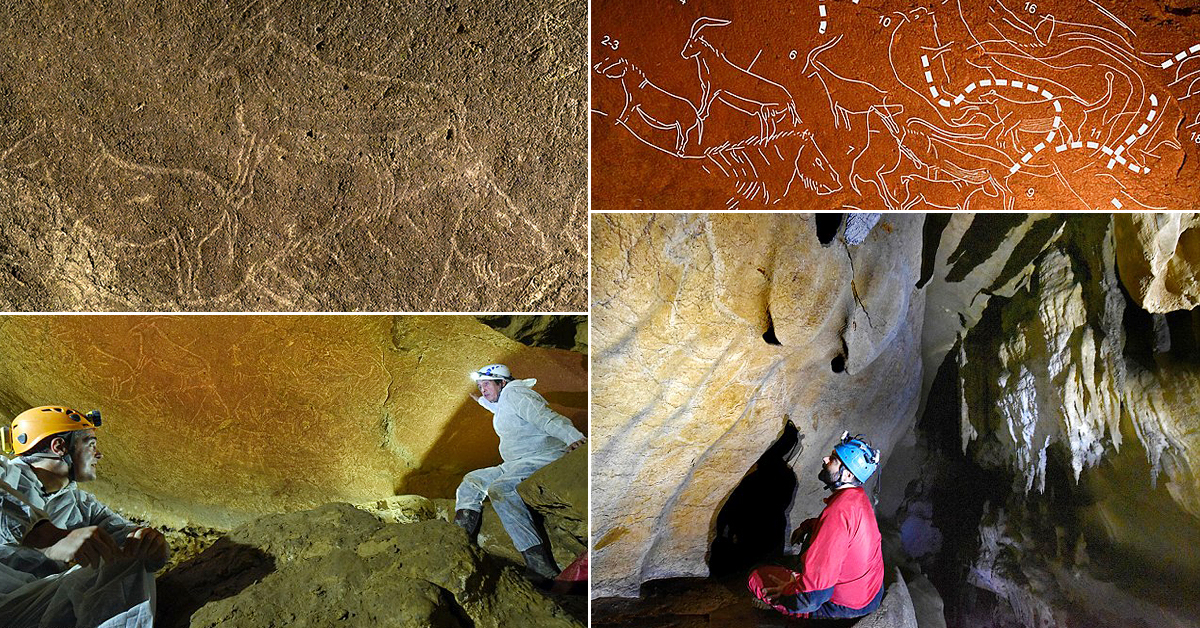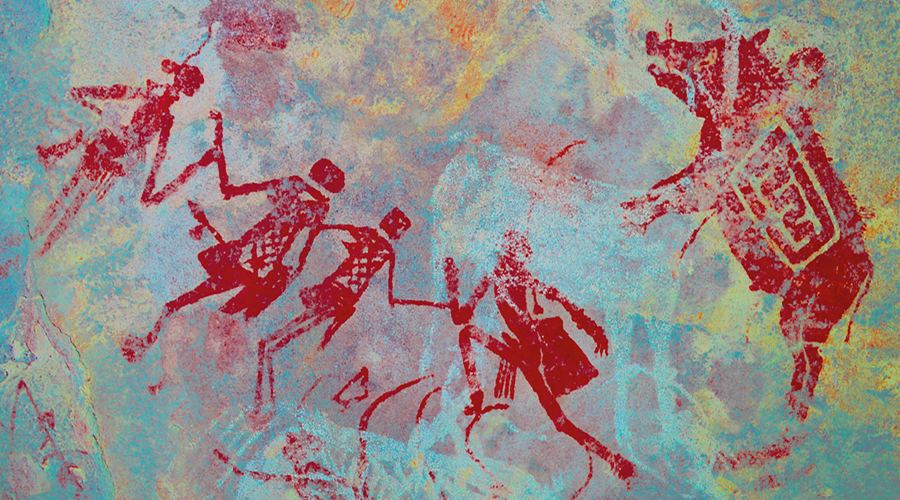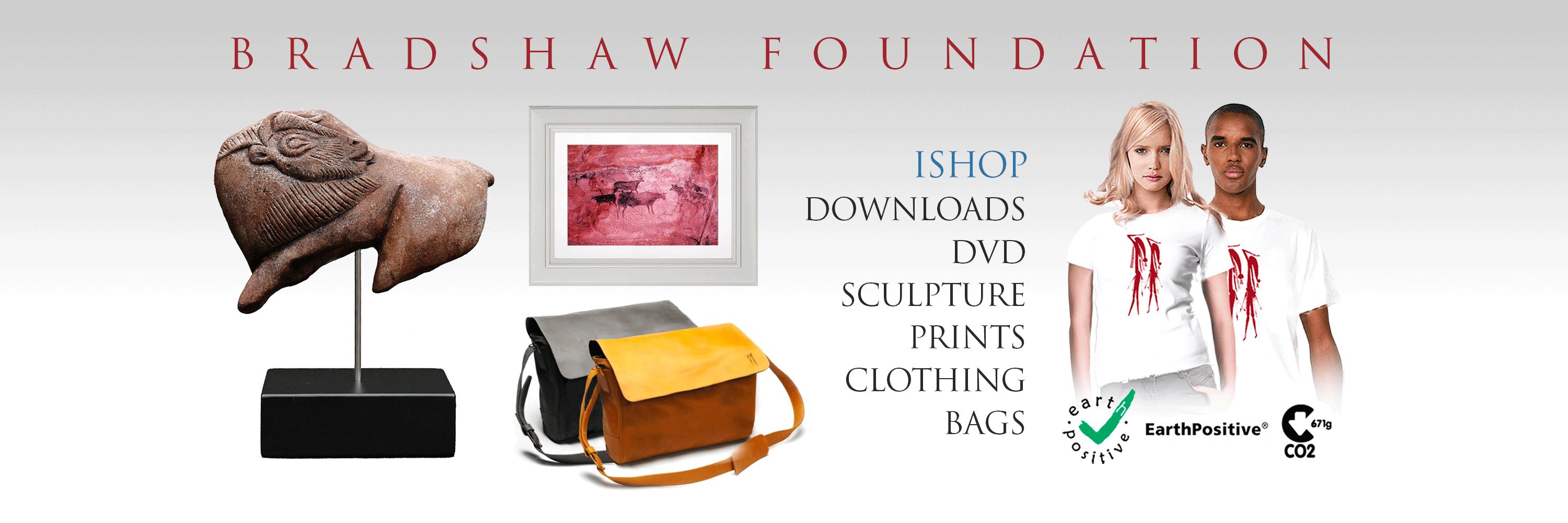


An article on the BBC - Cave art: Etchings hailed as Iberia's most spectacular - reports on the discovery of the 15m-long panel of engravings found in the Armintze cave, Lekeitio, in Biscay province of Spain.

Researchers studying the engravings in the Armintze cave. Image: AFP
Cave art as old as 14,500 years has been described as the most spectacular and impressive ever discovered on the Iberian peninsula. This cave art consists of some 50 engravings, including horses, bison, goats and - exceptionally for Palaeolithic art in the Biscay province - two lions. The size of the engravings is also exceptional; the depiction of a horse is roughly 1.5 m. in length.
Engravings of the Armintze cave in the Biscay province of #Spain https://t.co/B7ALcB7ZuN pic.twitter.com/YkYyZvX0f1
— Bradshaw Foundation (@BradshawFND) October 17, 2016
Engravings in the Armintze cave. Image: AFP
The discovery was announced by senior Biscay official Unai Rementeria. Although the cave was well-known to locals, the engravings had not been noticed.
There are two main panels, with some 30 animals depicted as well as geometric symbols such as semi-circles and lines. The symbols bear a strong similarity to those found in the French Pyrenees.
The similarities also apply to the depictions of the lions - cave lions - as well as to the artistic technique of engraving, suggesting cultural links between these two regions.
The cave will now have restricted access in order to preserve the engravings, dated from between 12,000 and 14,500 years ago, and to facilitate further scientific research.
View more of the rock art of Europe:
by Bradshaw Foundation
Friday 09 August 2024
by Bradshaw Foundation
Wednesday 24 July 2024
by Bradshaw Foundation
Thursday 04 July 2024
by Bradshaw Foundation
Monday 01 July 2024
by Bradshaw Foundation
Wednesday 20 March 2024
by Bradshaw Foundation
Tuesday 13 February 2024
by Bradshaw Foundation
Tuesday 13 February 2024
by Bradshaw Foundation
Thursday 01 February 2024
by Bradshaw Foundation
Tuesday 28 November 2023
by Bradshaw Foundation
Thursday 23 November 2023
by Bradshaw Foundation
Monday 20 November 2023
by Bradshaw Foundation
Tuesday 31 October 2023
by Bradshaw Foundation
Thursday 26 October 2023
by Bradshaw Foundation
Wednesday 20 September 2023
by Bradshaw Foundation
Monday 17 July 2023
by Bradshaw Foundation
Sunday 09 July 2023
by Bradshaw Foundation
Friday 09 August 2024
by Bradshaw Foundation
Wednesday 24 July 2024
by Bradshaw Foundation
Thursday 04 July 2024
by Bradshaw Foundation
Monday 01 July 2024
by Bradshaw Foundation
Wednesday 20 March 2024
by Bradshaw Foundation
Tuesday 13 February 2024
by Bradshaw Foundation
Tuesday 13 February 2024
by Bradshaw Foundation
Thursday 01 February 2024
by Bradshaw Foundation
Tuesday 28 November 2023
by Bradshaw Foundation
Thursday 23 November 2023
by Bradshaw Foundation
Monday 20 November 2023
by Bradshaw Foundation
Tuesday 31 October 2023
by Bradshaw Foundation
Thursday 26 October 2023
by Bradshaw Foundation
Wednesday 20 September 2023
by Bradshaw Foundation
Monday 17 July 2023
by Bradshaw Foundation
Sunday 09 July 2023
Friend of the Foundation











